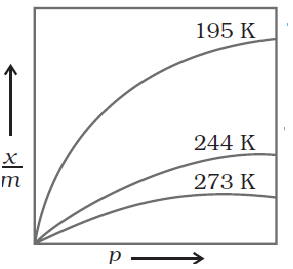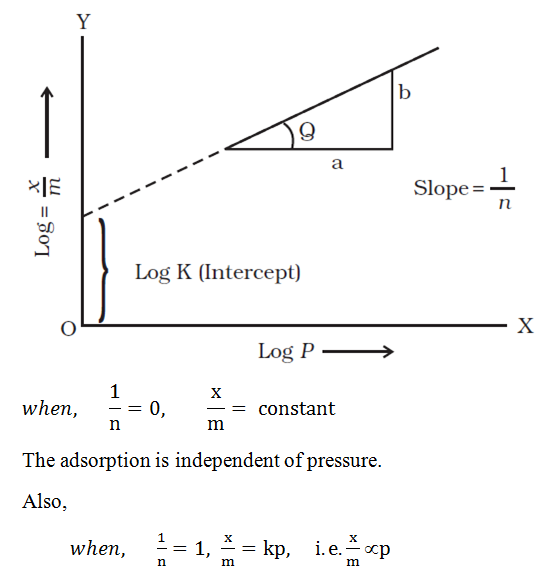Surface Chemistry Introduction
Surface chemistry is a branch of chemistry which deals the phenomenon of occurring at the interface of two phases. The interface between two phases is represented by hyphen or slash. Example: between solid and liquid represented by solid/liquid. There is no interface between gases because they completely immiscible with each other.
In surface chemistry we have to learn topics like adsorption, adsorbate, absorption etc., the below are the complete topics from surface chemistry chapter.
Adsorption: –
The accumulation of molecular species at the surface rather than bulk of solid or liquid is called Adsorption.
Adsorbate: –
The molecular species or substance which accumulates at the surface.
Adsorbent: –
The surface of material on which Adsorption takes place.
Desorption: –
The process of removing of adsorbed substance from the surface on which it is adsorbed.
Absorption: –
When the molecular species or substance enters in the bulk phase in solid or liquid is called as Absorption.
Sorption: –
When both adsorption and absorption takes place simultaneously is called as sorption process.
Mechanism of Adsorption
Inside the Adsorbent (in bulk) the force acting between the particles are mutually balanced but on the surface, the particles are not surrounded by atoms or molecules of their kind on all sides and hence they posses attraction force so particle stick on the surface of the Adsorbent.
The extent of adsorption increases with increase in surface area per unit mass of the adsorbent at a given temperature and pressure.
Heat of adsorption: – With increase in heat Adsorption process decreases.
Adsorption equilibrium: – As the molecules of the adsorbate are held on the surface of the solid adsorbent.
Entropy decreases, i.e. S is negative
![]()
For the process of adsorption to occur, G must be negative which is possible only when, S keeps on decreasing and TS keeps on increasing till ultimately H becomes equal.
To TS so that G = 0, this state is called adsorption equilibrium.
Types of adsorption
There are two types of adsorption
- Physical Adsorption or physisorption: – If accumulation of gas on the surface of solid occurs on account of weak vanderwalls forces is called physical Adsorption.
- Chemical Adsorption or chemosorption: – When gas molecules or atoms are held to the surface (solid) by chemical bonds, the Adsorption is called Chemical Adsorption
Characteristics of physical Adsorption and Chemical Adsorption
|
physical Adsorption |
Chemical Adsorption |
| · Lack of specificity: – A given surface of an Adsorbent does not show any preference for a particular gas as the vander walls forces are universal.
· Nature of Adsorbate: – The amount of gas Adsorbed by a solid depends on the nature of the gas. · Reversible nature: – Physisorption is reversible because adsorbate may be removed by decreasing pressure. · Surface area of Adsorbent: – Physisorption increases with increase in surface area. · Enthalpy of Adsorption: – Physical Adsorption is exothermic process but its enthalpy of adsorption is low (20-40 KJ mol-1).
|
· High specificity: – It is high specific because it occurs if there is some possibility of chemical bonding.
· Irreversibility: – As chemisorptions involve compound formation, so it is usually irreversible process. · Temperature: – Chemisorptions increases with increase in temperature after saturation starts decreasing. · Pressure: – it is also increases with increase in pressure. · Surface area: – chemisorptions increases with increase in surface area. · Enthalpy of Adsorption: – Enthalpy of chemisorptions is high (80-240 KJ mol-1) as it involves chemical bond formation. |
Adsorption isotherm: –
The variation in the amount of gas Adsorbed by the adsorbent with pressure at constant temperature can be expressed by means of a curve termed as Adsorption isotherm.
Freundlich Adsorption Isotherm: –
Freundlich Adsorption Isotherm is given by freundlich in 1909, gave an empirical relationship between the quantity of gas adsorbed by unit mass of solid adsorbent and pressure at a particular temperature.
The relationship can be expressed by following equation:-
![]()
Where ‘x’ is the mass of gas adsorbed on the ‘m’ mass of adsorbent at pressure p, k & n are constant which depend on the nature of the adsorbent and the gas at a particular temperature.
Relationship given by curve:-

The curve indicates that at a fixed pressure there is decrease in physical adsorption with increase of temperature.
Taking logarithm of eq..(i)
![]()
The validity of freundlich isotherm can be verified by plotting ‘log x/m’ on Y- axis and ‘log P’ on X – axis it comes to be a straight line.

The adsorption varies directly with pressure.
Adsorption from solution phase: –
solid can adsorb solutes from solution also.
Example:- litmus solution when shaken with charcoal becomes colourless.
Factors affecting Adsorption from solution phase
- The extent of Adsorption decreases with increase of temp.
- The extent of adsorption increase with an increase of surface area of the adsorbent.
- The extent of the adsorption depends upon the concentration of the solute in the solution.
- The extent of Adsorption depends upon the nature of the adsorbent and the adsorbate.
Applications of Adsorption
1) Production of high vacuum
2) Gas masks
3) Control of humidity
4) Removal of coloring matter from solution
5) Separation of inert gases
6) Froth floatation process
7) Chromatographic analysis




